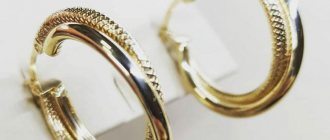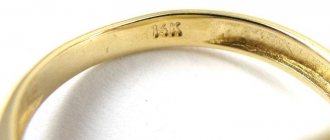A gold bar is a form for storing a precious metal that has material value. Currently, gold not only has not lost its relevance as a resource, but has also become a more sought-after metal on the world market. Electronic technologies are developing that require the production of microcircuits using noble, corrosion-resistant gold.
Gold bars
Ingots
With sharp fluctuations in the ruble and foreign currencies, gold bars become a reliable investment for many Russians. However, there are difficulties - you have to pay a fairly large tax for storing precious metals.
According to manufacturing technology, ingots can be cast, stamped, or powdered. Measured ingots are used for storing gold by the population, standard ingots are used for melting into other products.
Measured gold bars are bars weighing up to 1 kilogram and having a purity of 999.9. They are marked with weight and manufacturer. Such ingots are manufactured according to the Russian standard - GOST R 51572-2000.
Requirements for ingots:
- For each denomination of ingots, deviations in the following parameters are allowed: length, width and thickness.
- It is possible to change the shape and size of the bars, which is specified in the transaction agreement.
- The presence of dirt, grease stains, and scratches on the metal surface is unacceptable.
- Due to the softness of gold, bars can become deformed over time and take on a different shape - curved, concave. The surface may become wavy.
- The marking can be either curved or convex, but legibility in indicating the mass of the ingot is required. Correction of the inscription is unacceptable.
- The presence of a distinctive sign on one or more sides of the product is permitted.
Mandatory markings on domestic ingots:
- “Russia”, circled in an oval;
- mass in numbers;
- the name of the metal is “Gold”;
- sample or share;
- manufacturer's mark.
The registration number of the ingot is indicated below.
Many banks offer measured gold bars. Sberbank is the leader in Russia in the exchange of funds for precious metals and its storage. Other banks also sell gold and offer storage services.
Gold bars of different denominations
Yellow currency is stored both in the form of coins and in the form of bars of different weights. How much does a gold bar weigh? There are several denominations: 1, 5, 10, 20, 50, 100, 250, 500, 1000 grams. The metal purity in measured ingots is standardized and amounts to 999.9, which corresponds to the Russian state standard. The production of ingots and their marking are carried out by refineries.
Sberbank branches sell bullion at the following prices:
- A whole gold bar weighing 1 gram costs about 1850 rubles if the bank buys the gold. Banks sell a similar resource at much higher prices - 2700-2900 rubles per 1-gram denomination. This price includes value added tax.
- 5 gram denomination cans sell for 12,400-12,700 rubles. Banks can accept the same gold bar from the population, depending on its technical condition, for a cost of 9200-9400 rubles.
- A ten-gram standard bar of yellow metal will cost the buyer approximately 24,000 rubles, while it can be sold to a jar for 18,000 rubles.
- A denomination of 20 grams is valued by banks at about 49,000 rubles. The sale of the same measured ingot will bring its owner about 36,000.
- A 50-gram gold bar will cost the buyer approximately 121,000 rubles. A bank can accept 50 grams of refined gold from a private person in exchange for about 92,000 rubles.
- Banks sell a 100-gram gold bar for 242 thousand Russian rubles. A private person can sell the same gold bar for a price of about 184,000 Russian rubles.
- A quarter kilogram of a refined gold bar will cost the buyer 603,000. Among the population, banks accept bars weighing 250 grams for approximately 460,000 rubles.
- The price of a half-kilogram ingot is about 1,205,000 rubles. A private individual can sell his 500-gram stock for 921,000 rubles.
- A gold bar weighing one kilogram costs 2,408,700 rubles in Sberbank branches. They accept similar bars for sale at a cost of 1,843,000 rubles. Value added tax of 18% is also taken into account.
Some bars are produced in special packaging that protects them from dirt and grease, as well as damage.
Bank gold in measured gold bars is also produced in 585 standard, the content of the main metal in which is 58.5%. The remaining share comes from the alloy - other metals that give strength to the ingots.
How it was in the USSR
In the Soviet Union, the price was not tied to the metal exchange rate on international markets. Products were sold at higher prices. The cost of 1 g of 999 sample reached 90 rubles.
At the end of the 60s, the exchange rate of the metal on world markets was $ 1.3 per 1 g. At the same time, in the USSR, 90 kopecks were given for $ 1, although on the black market the rate was 2 times higher. Nevertheless, even with the most optimistic forecast, gold bars in the USSR were worth 30-40 times more than their real price. The purchase could only be made at the Vnesheconombank office in Moscow.
Interesting! The double course was characteristic not only of the USSR. In the 60s, the United States, together with 7 European countries, decided to create a “gold pool”. Its participants had to buy and sell precious metals to stabilize the market price. By the end of the 60s, this mechanism stopped working: the volume of purchases required to maintain costs became too large.
Standard Ingots
Standard gold bars are used in production, and they are produced in accordance with Russian GOST 28058-89. Used for melting into other items: wires, jewelry, parts, microcircuits. Manufactured to London Association standard. How much does a standard gold bar weigh? Weight ranges from 11 to 13.3 kilograms.
Requirements for such ingots:
- Shape: truncated pyramid.
- Dimensions of ingots can be changed by agreement.
- Flaws up to 5 mm deep are allowed.
- The surface should be free of grease and dirt.
- Markings are present on the lower base of the ingot pyramid.
The bottom base of the pyramid contains the following information:
- brand of gold;
- registration number;
- ingot weight;
- sample number;
- manufacturer identifier;
- Year of manufacture.
Recommended prices for gold, silver, platinum and palladium at the London fixing
There are currently 5 exchanges in the world dealing in precious metals, the main one being the London exchange – LME.
Twice a day, prices for gold and silver are fixed on this site (since 1987), which are the main reference point for other exchanges and dealers of precious metals.
Platinum and palladium futures are also traded on the LME.
Manufacturing technology
According to production technology, ingots are:
- stamped;
- cast;
- powder.
The mass of stamped bars is up to 500 grams. They are marked SSHZ. These are the most expensive types of bullion.
Cast gold bars are cheaper than stamped ones and are designated SLZ. Powder bars are made from powder by electrolytic deposition and are the cheapest to produce. Therefore, powder ingots will be cheaper.
Quality Analysis
In cases where there are no documents for the bullion, or its authenticity is in doubt, it is worth checking its quality. To make a quick quality analysis, a special touchstone is used. For example, they take a gold bar weighing 1 gram and make a line on the stone, then this line is compared with the lines created by standard (not in doubt) alloys of the same standard.
Then a glass instrument, previously dipped in acid, is drawn across the strokes containing gold. The acid leaves a dark mark in the presence of various impurities in the alloy. A darker trace indexes more impurities. Then a comparison is made between the reference strokes and the gold product, and the true gold content is determined. The method is not bad, takes little time and is reliable. Its disadvantage is that it shows the yellow metal content only in the surface part of the product.
Tools for checking the quality of gold.
Pros and cons of this type of investment
Before investing in gold, you need to carefully weigh all the pros and cons of this venture. Among the advantages, it is worth mentioning protection from inflation, a simple process of buying and selling, the internationality of the currency, as well as a gradual increase in value.
However, the investment process also comes with some negative aspects. First, you need to pay tax, which is 18% of the amount. Therefore, buying and immediately selling an ingot will be completely unprofitable, since this acquisition only pays off in the long term.
Storing gold at home comes with certain risks. In addition, even slight damage to the integrity of the ingot or its packaging can radically affect its price. Bank custody services also cost money.
To protect yourself from sudden changes in the political or economic life of society, it is recommended to invest from 10 to 30% of your savings in gold. Then, approaching retirement age, you don’t have to worry about lack of funds. Gold can be sold slowly or left to your descendants.
General information about gold bars. What types of gold bars are there?
click to enlarge
One of the most expensive and rare metals on Earth is gold. It is mined in the form of impurities from other metals, and only occasionally pure nuggets are found. Miners have to mine and wash tens of tons of rock in the most difficult conditions for the sake of several hundred grams of precious metal. Also, an admixture of gold can almost always be found in copper and silver. However, there are many other expensive and rare metals, so why has gold become so popular?
Gold is valued not only for its beauty, but also for many other positive properties. Gold does not oxidize or tarnish, is an excellent conductor and is used in medicine. The main thing here, of course, is resistance to acids - it is thanks to this that we have the opportunity to enjoy the sight of golden works of art, which are thousands of years old. Due to its unique antiseptic properties, it is added in small quantities to medications. Helps in the treatment of arthritis, lupus and other diseases. However, if we ignore the useful qualities and turn to history, we can see that gold is one of the first metals mined by man. But it was not possible to use it anywhere - it was too soft. And only thanks to its beauty it began to be used to create all kinds of jewelry, and subsequently money. But, despite its apparent softness, gold is one of the densest metals - more than a kilogram of metal can fit in a five-centimeter ball.
However, despite all its useful qualities, the main field of use for gold is still trade relations. You can buy it in the form of special coins or bars
, sold at any major bank, which is an excellent type of investment. States disappear, money depreciates, but gold never completely loses its value. There are many known cases in which gold savings saved people's lives - in besieged Stalingrad, jewelry was exchanged for food, and captured Jews, giving away all their savings, saved themselves and their families from concentration camps. But let's hope that we will never need it again for such purposes. At its core, gold is the hardest world currency - in almost any country it is relatively easy to exchange it for local money. Of course, in this case, some part of the initially invested amount may be lost, but a person will never find himself empty-handed. It’s not for nothing that in Muslim countries women wear all the jewelry on themselves - an ex-wife kicked out of the house by her husband will always be able to feed herself.
This type of financing is especially effective in the context of the current instability of the economy and exchange rate - the money invested can fall in price by almost half, a striking example of which is the recent financial crisis. However, encyclopedic knowledge about gold alone will not be enough
– you need to know well the features of the gold market not only in Russia, but also in other nearby countries. So there is an opinion that in Turkey you can buy gold much cheaper. And this is true, if its quality does not play a decisive role, such a precious metal is not suitable for investment. Unlike Russia, in Turkey there is no precisely designated karat system, thanks to which each company selling gold has the opportunity to take full advantage of its imagination - gold of the highest standard purchased there from us can, at best, turn out to be “average”. Also in the markets there is a high percentage of counterfeits made from all kinds of alloys, and in state stores the prices are not much different from ours. In addition to the purity of the gold itself, the taxation system plays an equally important role, which can amount to up to 20% of the price of the bullion. Thus, in Russia a VAT of 18% is charged, which is not refundable when gold is sold.
In addition to gold, silver, rhodium, osmium, platinum, palladium and others are also considered precious metals. It is worth understanding that a gold bar is not at all the same as a steel bar. And the point here is not only the accuracy of the weight - a special stamp is placed on each gold bar, which indicates the weight, purity and number of the bar. There are two types of gold bars – standard and measured. They are produced in refineries where production is under strict control. They are required to comply with all standards established in the Russian Federation. Bullion is also produced for trade with other countries, for which completely different standards apply, established by the London Gold Merchants Association, which dominates the market for the purchase and sale of this precious metal. If an ingot violates any standard, it is immediately sent for remelting. So, what is the difference between measured and standard bars?
Measured gold bars
On the territory of Russia, gold in such bars must be practically pure - from 99.99% pure precious metal. They are produced in different sizes - from 1 gram to a kilogram. They are the most affordable way to buy gold in banks. As with any other product, there are certain standards for precious metal bars:
- The maximum permissible error in mass is indicated, as well as the nominal length and width of the ingot. Oddly enough, the thickness is not indicated anywhere.
- The surface of the ingot must be absolutely clean - if grease stains, scratches, chips and other damage are found, its price will drop, so they should be stored extremely carefully.
- Despite the significant rigidity of some standards, the sides of the ingot may have a wavy or curved surface.
- Each ingot must be clearly marked. Letters and numbers must be uncorrected, clearly visible and not merge with each other. It is applied to the front side and must include the inscription “Russia”, weight in grams, name of the metal, total amount of precious metal, trademark and serial number of the ingot.
Also, each bar, regardless of size, is accompanied by a certificate from the manufacturer, which records the production date, fineness, type of precious metal, number and other data. Thanks to the unique number, it is easy to trace the history of the purchase and sale of any bullion ever produced. And even if the certificate is lost, you can always use the data indicated on the label. Moreover, each of the factories has its own numbering method, so identifying the manufacturer will be no less easy. The size and shape of the ingots, although indicated in advance, can be changed at the request of the customer.
Standard gold bars
And if marked bars must have increased purity and weight accuracy, with standard bars everything is somewhat simpler. So the sample must be at least 99.95%, and the alloy mass can fluctuate more freely (alloy mass is understood as the total mass of the ingot, taking into account impurities). Factories producing such ingots strictly adhere to GOST standards:
- A standard gold bar should weigh no less than 11,000 grams and no more than 13,300 grams.
- They are required to have the shape of a regular truncated pyramid, however, refineries have the right to deviate from this norm at the request of the customer.
- The amount of precious metal in an ingot is indicated according to officially approved standards.
- As with measuring ingots, the surface must be free of any stains or damage, however, the presence of cleaned areas is allowed, the depth of which does not exceed 1 mm, and the concavity should not be more than 5 mm.
- On the larger base there should be a marking indicating the production date, ingot number, state symbols, etc.
also differ
. Of course, stamped ingots look more attractive, because their surface is perfectly smooth. This effect is obtained due to pressure on the metal in a heated state, however, production requires the use of high technologies, which is why the cost increases, which nevertheless does not make them less liquid. The weight of such an ingot rarely exceeds half a kilogram.
Ingots produced by casting do not look as presentable and are cheaper, occupying an average price position. Their weight also does not exceed 500 grams. The cheapest of all existing ones are powder ingots. Using electrolysis, gold dust is combined with each other and given the desired shape. However, it is difficult to find such an ingot in Russia, because They are not produced in our country.
Having decided on the types of existing bars, it is worth paying attention to ways to identify counterfeits. Unfortunately, it is not possible to try the ingot “by the tooth” - after that it can sharply lose in value.
How to determine the authenticity of a gold bar?
- The simplest solution would be to take the bar to a jeweler - he will easily carry out the necessary measurements and analyzes and give an accurate answer. If this option does not suit you, you can try the following points.
- Drop iodine or vinegar onto the surface. There will be nothing wrong with the gold, but there will be a spot on the fake. However, in this way you can only check the outer part of the ingot, and it is not possible to recognize the sample.
- Study the mark carefully. It should contain all the necessary information. So, Soviet ingots depict a hammer and sickle or a woman in a headscarf.
- Following Archimedes' law, it is easy to calculate the exact volume of the ingot.
- If the check must be quick, the following method is used - a gold item is passed over the touchstone, leaving a mark on it. Then next to it the same action is repeated, but with a reference sample. After this, they are passed over them with a stick soaked in acid - the darker the trace remains, the more impurities there are in the gold.
You should only buy gold from reliable places.
Even if your knowledge about gold is not limited to the information in this article, it is best to contact banks and not believe tempting offers. Thus, scammers can simply pass off pyrite as a precious metal - they are very similar in appearance and at first glance it is extremely difficult for the average person to tell the difference.
As mentioned above, in Russia, when purchasing gold, a commission of 18% is charged.
, which makes the purchase financially unprofitable. However, in other countries, the taxation system is more accepting of gold purchases, which will save a considerable amount of money. First of all, you should pay attention to Switzerland, the United Arab Emirates and Singapore. However, there is one thing - for such a purchase to be truly profitable, the amount of gold purchased must be more than significant - it is worth taking into account the cost of air tickets and all kinds of banking services.
You should not trust the purchase of gold to intermediaries
, and even more so to conduct it via the Internet - there are many fraudulent sites, using which you will, at best, receive less gold, or even lose all the money you paid. The same applies to personal acquaintances - trust is inappropriate in financial matters. Of course, you won’t immediately guess anything - fictitious bars can be stored in a safe deposit box in a very real bank. It has gotten to the point where scammers are offering to make payments using WebMoney.
Related materials:
- Counterfeit money - how to spot it?
- Popular misconceptions about money
- Gold hallmarks - what does a hallmark on a gold product mean, what hallmarks are there?
- How to invest in gold?
Authorization through the Loginza service:
A gold bar is a standard form of a certain mass and quality. The word “gold bar” has become synonymous with high-grade gold. In the modern world, mainly products with a purity of 0.995 or 0.9995 and higher are in circulation.
The history of the origin of the gold bar is interesting. As large cities emerged and economies began to develop, a barter system emerged through which people could exchange goods and services. Gold and silver were widely used in various transactions, but their weight had to be checked every time they changed hands.
Approximately around 6.7 centuries BC. e., the inhabitants of Lydia found an original way out of this situation. It was an alloy of silver and gold, the so-called “electrum”.
It was a gold bar of a certain weight (for example, 20 grams) with a state stamp placed on it. The idea was progressive and therefore, about fifty years later, all the main retail outlets in the world began to use a similar practice.
Buying and selling
Trading in this product is primarily the prerogative of banks. You can not only buy gold there, but also leave it for storage. Such a financial investment has a high level of profitability, but only in the long term, since the purchase price will be higher than the sale, as with other foreign exchange transactions.
What determines the price of a bank bullion?
In addition to the current gold rate, the price of the product is tied to its weight. The buyer pays the most money if he purchases metal weighing 1 gram. The higher the weight of the ingot, the cheaper the gold is per gram.
When selling gold to a bank, some financial institutions, for example Sberbank, provide an additional commission, which increases in proportion to the weight of the item being handed over.
Products in poor condition, on the contrary, are accepted at banks, charging an additional commission of about 3% of the value of the metal.
How much does a gold bar cost in Russia 1 gram and 1 kg
As of today. 1 gram of gold costs:
| Price 999 standard according to the Central Bank | Market value of the sample today | Scrap price | Price in jewelry |
For an ingot weighing 1 kilogram you will have to pay (in million rubles):
Where is the best place to buy bullion?
It is always better to purchase such things from financial institutions. In this case, the possibility of forgery is eliminated and the availability of the entire package of accompanying documents is guaranteed.
Where and how to store the bullion
The storage of gold, including in coins, should also be entrusted to the bank. It’s not safe to keep such valuables at home, and there’s no point in keeping them. The financial institution opens a metal safekeeping account for the client - an analogue of a safe deposit box. You can put all your precious savings there, add new ones or withdraw the necessary part.
The cost of such a service will not depend on the number of items, their weight and even the metal from which they are made - all your savings in precious metals can be kept in one place.
To see how Russia's gold reserves are stored, watch the video:
The price of gold depending on its functional purpose
In the modern world, gold can be present in the following functional and qualitative incarnations:
- As an industrial raw material resource.
- Like a piece of jewelry.
- As a means of accumulation in the form of bullion.
- As a collectible in the form of coins.
- As a trading exchange instrument.
Price formation in each of the listed cases is quite specific. The cost will depend on the relationship between supply and demand, production and processing costs, speculative stock market trends, etc.
What to do if you are determined to buy precious metal in a bank?
So, you have decided that at the moment the most profitable investment of money is buying a gold bar. What to do now? Where to begin? First you need to find out which Sberbank branch provides this service. You should also find out whether the department has special rooms for storing gold bars, and whether specially trained specialists work in this department. Next, you should think about the ingot itself. What amount can you spend, what weight are you interested in. Have you decided everything? You can go to the bank, not forgetting to take your passport with you, without which the transaction will be impossible.
New world record
Until recently, the record holder for its weight was a gold bar in Taiwan weighing 220 kilograms. The Japanese surpassed this result by casting a precious piece weighing 250 kilograms and costing 12.5 million dollars, and submitted an application for this to the Guinness Book of Records.
There is a statement that the smaller the weight of the ingot, the more expensive each gram is worth. And the larger its size, the cheaper it will be per gram of yellow metal. But if you look at the huge gold bars (the photographs clearly demonstrate them), you can doubt the veracity of this statement.
Ingot weight and dimensions
In Russia, ingots weighing 1, 5, 10, 20, 50, 100, 250, 500 and 1000 g are produced. Foreign-made products also come in weights of 2, 2.5 grams. 1 troy ounce is often found, equal to 31.1 grams.
International measure
The most common measure for gold abroad is the troy weight system. In bank accounts, gold can be recorded in both the metric system (grams, kilograms) and ounces. This system is used not only for precious metals: it is used in pharmacy and cosmetology to account for particularly valuable components.
Requirements for the gold bar standard
The list of requirements is regulated by GOST R 51572-2000. The document contains dimensions and maximum weight deviations from the norm, regulates the absence of cracks, foreign elements, damage and contamination, and lists permissible deformations that occur during production.
Each product has its own unique number, which is certainly indicated directly on the ingot. In addition, mandatory information is applied to the metal using markings:
- a stamp in the form of an oval with the inscription “Russia”;
- exact weight;
- the inscription "Gold";
- noble metal sample;
- brand of the refinery manufacturer.
All inscriptions must be on the title side of the product and be legible. Corrections or merging of letters are not allowed in the text. The presence of defects is the reason for the decrease in the value of a precious item.
Gold Investments
At all times, experienced people kept a certain part of their money in gold equivalent and thus avoided economic problems during all kinds of crisis situations. It is a safe and stable investment whose main purpose is to preserve the value of money.
Gold bullion is a great option for storing money for those who are tired of constantly checking financial news and price jumps, as there is no need for it. For quick enrichment, gold is not the most suitable option, since it is designed for the long term.









